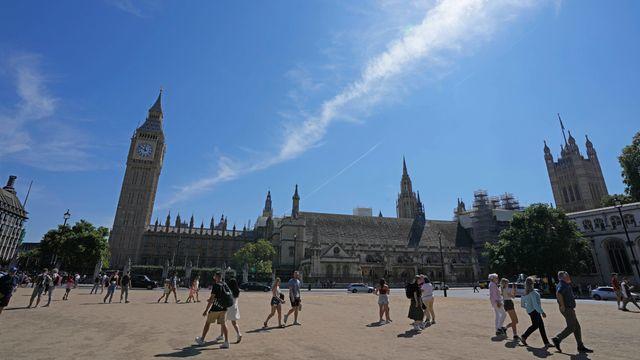Forecasters have warned that the warming El Nino weather cycle could be poised to return in a “significant” way, after three years of the world-cooling La Nina effect.
An El Nino event could begin within two months – and that there is a greater than 90% chance it will last into winter in the northern hemisphere, US forecasters have said.
They warn that this year’s El Nino could be “significant”.
The first signs of the warming El Nino effect – which sees the Pacific Ocean warm by up to 3C, but has knock-on effects around the world – are already here.
The US Climate Prediction Centre said that above-average sea temperatures spread westward into the east-central equatorial Pacific Ocean in April.
A statement said: “The most recent IRI [climate prediction tool] plume also indicates El Nino is likely to form during the May to July season and persist into the winter.
“The combination of a forecasted third westerly wind event in mid to late May, and high levels of above-average oceanic heat content, means that a potentially significant El Nino is on the horizon.”
The Centre said there was roughly a 55% chance of a “strong” El Nino.
Scroll back up to restore default view.
Professor Adam Scaife, head of long-range forecasting at the Met Office, said earlier this year: “The current record for global temperature occurred in 2016 and it’s no coincidence that followed the last big El Nino.”
He added: “If we get a big El Nino at the end of this year then, we’re likely to break the record for global temperature in 2024.”
What is El Nino?
El Nino is an event where temperatures in the Pacific are warmer than normal – it’s declared when temperatures rise 0.5C above the long-term average.
El Nino events see the Pacific Ocean up to 3C warmer than normal, and during La Nina – the other part of the cycle – the ocean is up to 3C colder.
There’s also a neutral phase.
La Nina often has the opposite impact on weather and global climate as the better-known El Nino, which is the warm phase of the so-called El Nino Southern Oscillation (ENSO).
Temperatures around the world increase by about 0.2C during El Nino, and fall about 0.2C during La Nina.
Caused by a recurring cycle, El Nino events can have knock-on effects on weather in the UK – with El Nino years linked to a risk of colder winters in Britain.
The Met Office said: “El Nino is felt strongly in the tropical eastern Pacific with warmer than average weather. The effects of El Nino often peak during December.
“It’s name, ‘the boy’, is thought to have originated as ‘El Nino de Navidad’ centuries ago when Peruvian fishermen named the weather phenomenon after the newborn Christ.”
La Nina can also have knock-on effects on weather around the world.
The Met Office said “La Nina, or ‘the girl’, is the term adopted for the opposite side of the fluctuation, which sees episodes of cooler-than-average sea surface temperature in the equatorial Pacific.
“The conditions for declaring La Nina differ between different agencies, but during an event sea temperatures can often fall 3C to 5C below average. Cooler, drier-than-average weather is experienced in the tropical eastern Pacific.”
Will El Nino affect climate change?
Campaigners and observers have warned this year that the return of El Nino could push the world past crucial climate change barriers.
The past three years have seen the opposite La Nina effect, which has helped to damp down temperatures – although 2022 was still the fifth-warmest year on record, according to Nasa.
El Nino events are getting stronger, warns the Met Office’s Professor Scaife.
He said: “We know that under climate change, the impacts of El Nino events are going to get stronger, and you have to add that to the effects of climate change itself, which is growing all the time.
“You put those two things together, and we are likely to see unprecedented heatwaves during the next El Nino.”
Several experts have warned that the coming El Nino could see the crucial 1.5C temperature barrier (when compared to pre-industrial levels) breached as global temperatures soar.
The IPCC has warned that if the world breaches the 1.5C barrier, it could lead to increased heat waves, longer hot seasons and shorter cold seasons – with increased extreme weather the higher the temperature goes.
TYT Newsroom




